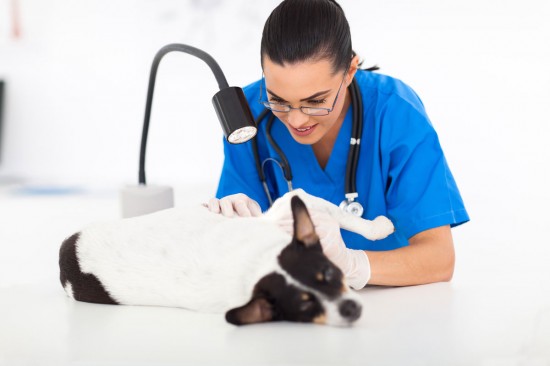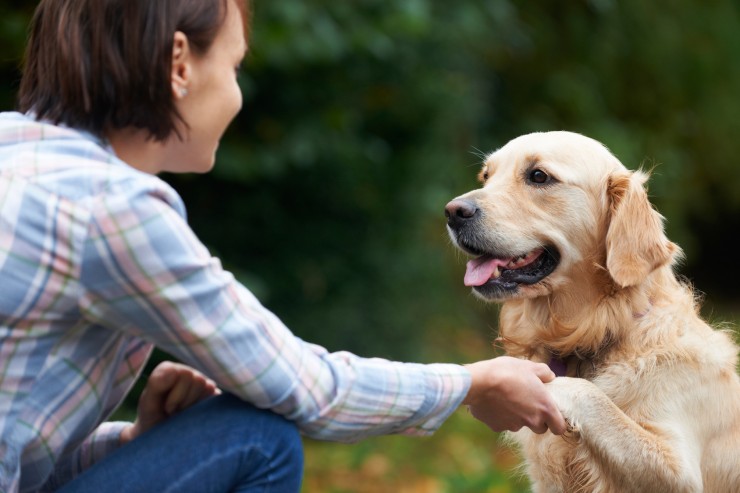

It comes as a surprise to many dog owners to learn that ringworm is not actually a worm at all. Ringworm is a fungal infection that affects the skin, and may also progress to affect other areas of the body too, such as the claws. Ringworm is not a worm in the correct sense of the word; it is not an internal parasite, and cannot be treated and eradicated with the usual worming pills that you might buy from your vet to deal with intestinal worms such as roundworms and tapeworms.
One important point to bear in mind about ringworm in dogs is that it is not only dogs that can contract it; ringworm is a zoonotic condition, meaning that it can be passed back and forth between dogs (and also cats and other animals) and people as well. Ringworm is highly infectious, and can be passed from your dog to yourself by simple contact with the affected area of the skin.
If you want to learn more about ringworm in dogs, including how to identify it, how to treat it and how to avoid catching it yourself, read on to learn more.
Ringworm is known medically as “dermatophytosis,” and is a fungal condition much like infections such as athlete’s foot, which can affect the upper layers of the skin, hair follicles, hair fibres and sometimes the claws.
While it is incredibly easy to pass ringworm from dog to dog or from dog to person and vice versa, ringworm is not a hugely prevalent condition in dogs, and it is relatively unusual for a dog to become infected with ringworm in the first place (and so, able to transmit it to other animals or people).
Ringworm is transmitted to dogs either by direct contact with another dog (or person, or other animal) that has the condition, or by means of contact with the bedding, bowls or other equipment that is used by another infected dog. Some varieties of ringworm can live and thrive within the soil, and can be transmitted to dogs by their playing in or rolling on infected areas of land, making it rather difficult to prevent unwitting exposure to the ringworm fungus.
Ringworm is a zoonotic condition, which means that if your dog has ringworm, it will be easy for you to catch it as well. Ringworm can be difficult to fully eradicate, as it may be passed back and forth between infected animals and/or people unless all of them are completely cured of the infection. In order to give yourself the best chance of avoiding contracting ringworm from your dog, it is important to follow these guidelines when handling an affected animal:
Ringworm gets its name from its appearance, which takes the form of circular areas of skin where the fur appears slightly raised, and will eventually fall out, displaying a scaly area of skin that has a red corona around the outside. The ringworm fungus develops from the inside of the circle outwards, and the red corona around the border is caused by the live ringworm fungi spreading out.
Ringworm does not usually cause irritation and itching in itself, although dry, scaly areas of skin and scabs can prove itchy when left unchecked. Ringworm is generally painless.
Ringworm can also spread to your dog’s claws, where it thrives on the keratin-rich hard tissue of the claws, and leads to dry, brittle nail tissue that is often prone to cracking and may grow abnormally.
In order to seek treatment for ringworm, you will need to get the condition formally diagnosed by your vet, as many other skin conditions can appear similar to ringworm, including demodetic mange and dermatitis, each of which require different treatment protocols.
While ringworm may resolve itself and die off after a few months, this is not always the case, and any dog that carries a ringworm infection for this amount of time will almost certainly transmit the condition to a variety of other animals along the way.
Treatment for ringworm involves the topical application of an antifungal medication if just a couple of spots of ringworm have been identified, but for progressive and more widespread infections, a range of other treatment methods may be utilised as well. Bathing with an antifungal shampoo may be required, and in the case of dogs with very long or thick fur, their coat may require clipping down to ensure that any treatments administered can get right to the root of the problem.
In severe cases of ringworm where the infection is very widely spread, your vet may prescribe a more aggressive antifungal medication, although these drugs do come with a potential range of side effects that mean they are rarely the first choice during treatment.
All of the various medications and antifungal preparations for ringworm must be prescribed by your vet, and cannot be bought over the counter or substituted.
In the greater scheme of things, ringworm is one of the less potentially dangerous health problems that dogs can suffer from. However, any fungal infection can compromise your dog’s immune system, leading to them becoming more susceptible to contracting other conditions, and the scales and scabs that accompany ringworm can become infected and lead to further complications. Damage to the claws caused by ringworm infection can be hard to correct, and can make walking uncomfortable for your dog, and this, as well as the extremely contagious nature of the infection, means that treatment for ringworm in your dog should be sought sooner rather than later.
 A Great New Years Resolution - Get Healthier With Your Dog
A Great New Years
A Great New Years Resolution - Get Healthier With Your Dog
A Great New Years
 What Is Von Willebrands Disease In Dogs ?
What Is Von Wille
What Is Von Willebrands Disease In Dogs ?
What Is Von Wille
 Quarantine Tanks For Fish
Quarantine Tanks
Quarantine Tanks For Fish
Quarantine Tanks
 Keeping Parrots As Pets
Keeping Parrots A
Keeping Parrots As Pets
Keeping Parrots A
 Gorgeous White Coated Cats – But Are They Prone To Deafness?
Gorgeous White Co
Gorgeous White Coated Cats – But Are They Prone To Deafness?
Gorgeous White Co
Copyright © 2005-2016 Pet Information All Rights Reserved
Contact us: www162date@outlook.com